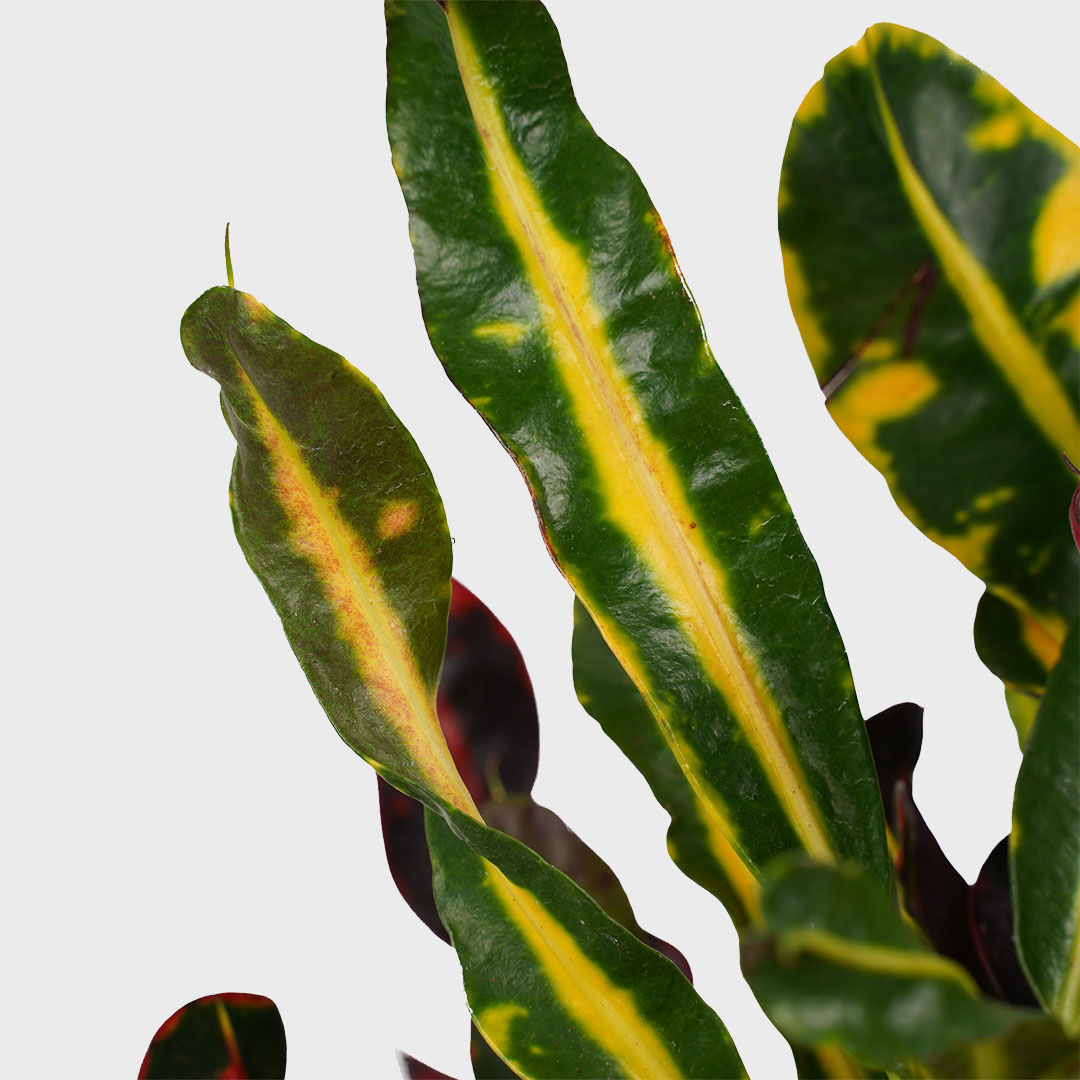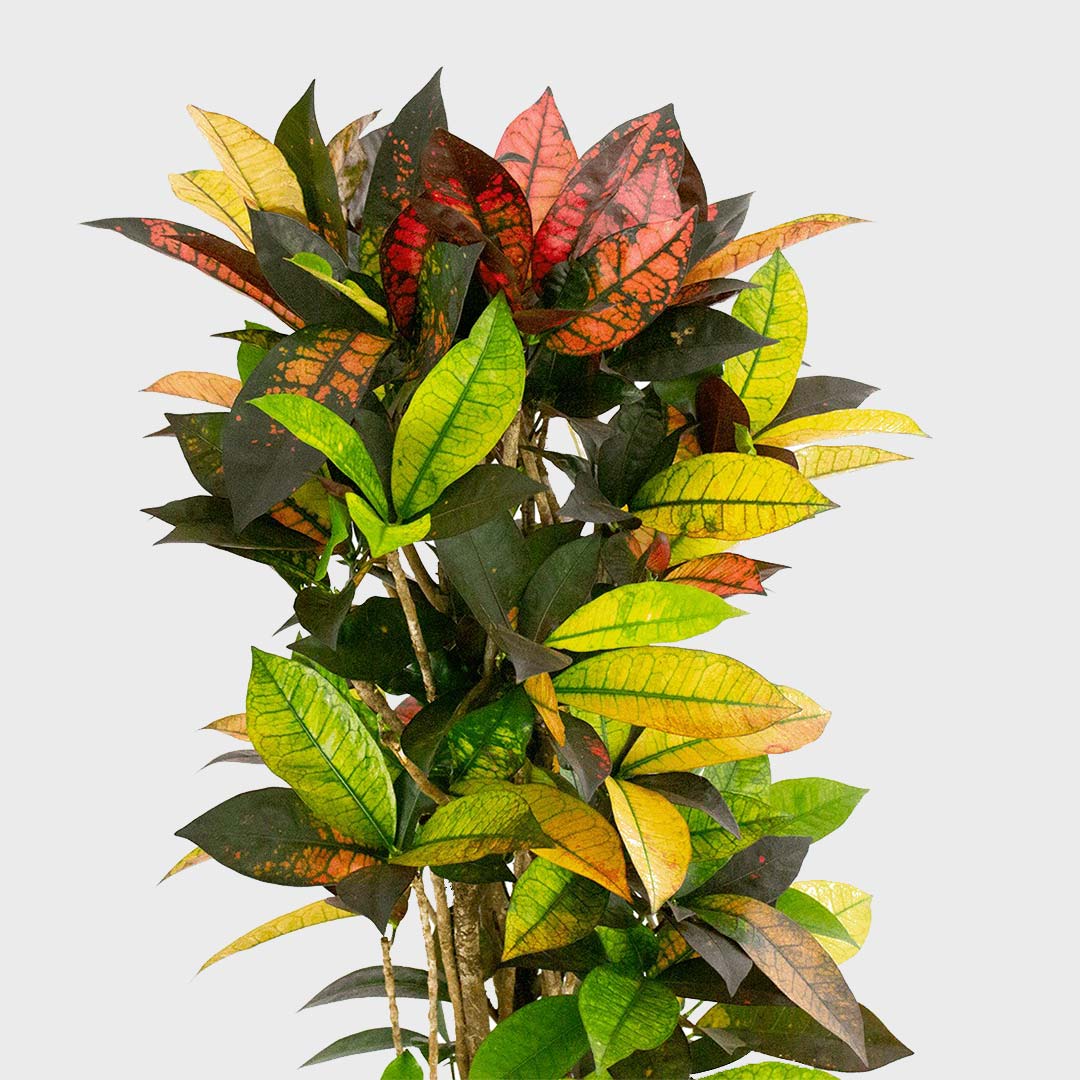
Deliver to
Europe
 English
EnglishThe Croton Codiaeum, is native to Indonesia and India. Despite the fact that its name sounds like something you’ll hear in a space movie, the Croton plant is an incredibly varied houseplant, mesmerizing everyone with its thick, leathery leaves that have a shiny surface and that grow in a wide variety of colors ranging from red, yellow, green, orange, cream, pink and black to a combination of all these.


Medium light
Water once a week
Toxic
Non Air-purifying
The Alocasia likes to be placed in a spot with lots of light. Not all species tolerate bright light well. It is best to place the plant in medium bright light. The Alocasia prefers a spot next to a window on the west or east. A spot near the south is of course also possible. Make sure that the plant is at least 2 metres away from the window. A spot near the north probably has too little light.
If an Alocasia gets too little sunlight, the plant will grow long stems. With its long stems the plant hopes to reach the sunlight. This can be crucial for the plant. Because of the long stems the leaves can become too heavy and break off.
Therefore, don’t forget to turn the Alocasia! The plant grows towards the sun. If you do not rotate the plant will only get full on one side and that is what you want to prevent.
It is important to always keep the soil of the Croton slightly moist. You can check this to put your little finger in the soil. Never let the Croton dry out. Not even in winter! It is best to water the Croton once a week all year round. In the winter it may be a smaller amount.
Keep the soil moist, but water only when the top of the soil is dry when touched.
The Croton can use some extra nutrients from spring to the end of summer. You can provide these nutrients by plant nutrition. We recommend giving plant nutrition once every six weeks. After autumn and in winter it is better not to give extra nutrients. In the autumn, plant nutrition can actually be harmful for the Croton!
Croton plants thrive in warm temperatures and are native to tropical regions. The ideal temperature range for Croton plants is typically between 15 to 29 degrees Celsius.
Croton plants can become leggy with long, bare stems and older foliage. Pruning can help encourage to get a bushier growth and a more compact form. Trimming back excessively long stems promotes branching and stimulates new growth.
If the air is too dry, the Croton can suffer from mealy bugs. To prevent mealy bugs, it is best to use the plant sprayer once a week. Mealy bugs are an infection on plants. You can recognise the infection by infected leaves and a kind of cobwebs. If you have come across mealy bugs, it is best to place the plant outside. Wind and moisture from outside will quickly keep the mealy bugs away.


When the Croton is thirsty, its leaves droop dramatically. After you have watered the plant, it will slowly recover.
Brown spots on Croton leaves are always caused by incorrect watering. It can be caused by too much or too little water.
Yes, you certainly can. Check out our tips on how to propagate the Croton.